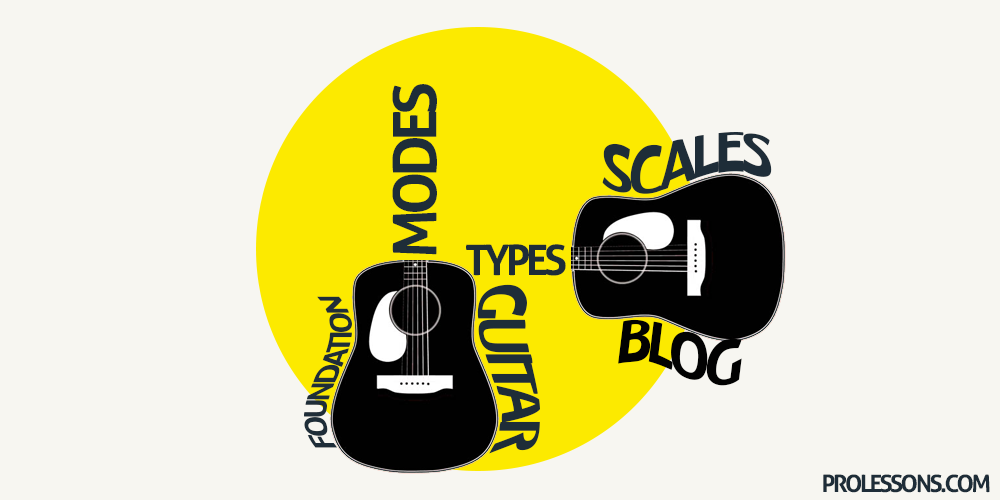FREE LESSON
PHIL KEAGGY - Grammy nominated and seven-time Dove Award winner, is one of the world’s great guitar players and a pioneer in contemporary Christian music.

Let's take a look at some of the most popular guitar scales. These are the ones that you've heard a thousand times on all of your favorite recordings. Everyone from Hendrix to Paramore, Stevie Ray Vaughn to the Arctic Monkeys. They're all using the same scales. What they do with it speaks volumes about their talent and creativity. We'll give you the scale shapes and some understanding of how they work so you can play right along with your favorite recordings.
Guitar hasn't been around very long in the grand scheme of things, and neither has recording. However, some of the first recordings ever were of a young bluesman named 'Blind Lemon Jefferson' circa 1917. These recordings paved the way for the onslaught of blues guitar albums, as well as all the rock albums that followed.
These blues and rock albums may sound worlds apart, but if you listen closely, beyond the wall of Marshall full stacks, you can hear one common sound: the minor pentatonic scale.

This scale is crucial for every guitarist who wants to play lead or create an epic rock anthem. Cue "Back In Black" and its descending E Minor pentatonic riff.
Pro Tip: The root of this scale is your first finger on the E string. Learn the notes on your E and get comfortable moving it around. Now, you can solo over any minor or blues song. This is a great way to learn how to solo! Find the key and just go for it.
Occasionally in music, you have rebels. People who shirk off the leather jacket, chain smoking norm, and quietly create an entirely new sound in a far away land. This sound then explodes across the airwaves of every nation. I'm referring, of course, to U2 and The Beatles.
Both of these bands threw off the shackles of the minor pentatonic scale and embraced the diatonic scales of their forefathers. After all, if Mozart and Bach didn't limit themselves to five notes, then why should we?
Okay, so both of these bands also had huge smash hits with songs based on minor pentatonic scales. However, their big breakout hits and general sound were based largely on this little gem.

The root of this scale is also on your low E string, so you can moved it all around the fretboard to accommodate all 12 of the keys. Learn it well, It's the basis of not only some classic, genre defining songs; it's also the foundation of all music theory.
Pro Tip: Remember how I mentioned that you would be able to solo over any song in a minor key with the minor pentatonic scale? Well, with the addition of the major and major pentatonic scale, you can solo over pretty much every song in existence. Use your ear to determine if it's major (happy, positive, energetic sounding) or minor (dark, sad, contemplative).

There are about a dozen other popular guitar scales and shapes. I'll give a list of a few popular songs and the guitar scales that they're using just to open up your ears to the possibilities.
Pro Tip: Even though these songs exemplify the sound of specific modes and guitar scales, you can still use the major and minor pentatonic scales to solo over all of them. The minor pentatonic will work over the first five songs, and the major pentatonic will work over the last three. (You can use major or minor pentatonic for "Funk #49").
There are seven modes of the major scale. This is the simplest way to understand the modes. Here are the notes in the C major scale.
C-D-E-F-G-A-B
The second mode of the C major scale starts at the second note, and contains all of the same notes as C Major. It's called D Dorian and the notes are:
D-E-F-G-A-B-C
This is a great scale and it gets used all the time in blues, rock, and jazz songs. It sounds kind of bluesy with a more sophisticated, uptown feel.
The modes continue like this until you cycle through all 7 notes in the key. There are 7 unique modes, with their individual sounds and funky names. Here's a list of the 5 remaining modes in the key of C.
These modes follow the same pattern in every key. So feel free to try them in all 12. Now that you know their names you can do a quick Google image search for any mode you might need.
Master these fundamental guitar scales, learn the notes on your fretboard, and you'll be able to solo over anything. It's also a great way to take your songwriting to a new level. Many popular songs include signature riffs. Most signatures riffs are just a simple, repetitious musical phrase built on one of these popular guitar scales. Get familiar with the sound of each scale. These sounds are the colors that we paint with as musicians.
If you would like to dive deeper into guitar scales feel free to click the link below and get started with one of the pro instructors from Pro Lessons. This article just scratches the surface. Do you wanna go deeper? You'll be glad you did.